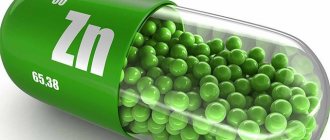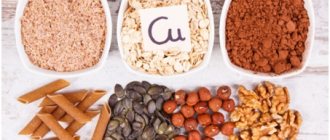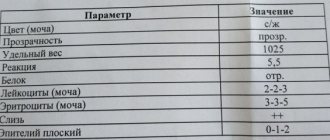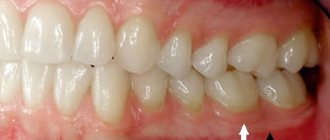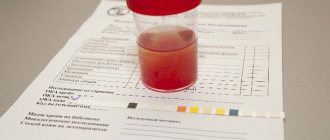In this article we will tell you:
- Classification of minerals
- The role of microelements in the human body
- Micronutrient intake standards for humans
- Signs of deficiency of important microelements in the body
- What are the dangers of excess microelements in the body?
- Foods containing essential micronutrients
- Replenishing the lack of microelements in the body
- Compatibility of microelements and vitamins
The role played by trace elements in the human body cannot be overestimated. They are present in bone tissue and tooth enamel, are one of the components of hemoglobin, and help in the functioning of the digestive system. What can I say - the lack of a single chemical element can have a detrimental effect on our health.
Today we live in an increasingly deteriorating environment. And if we add to this constant stress and frequent lack of necessary physical activity, then almost the only way out of the situation is good nutrition, that is, a correctly composed diet. And it should contain not only proteins, fats and carbohydrates, not only various kinds of vitamins, but also a whole range of useful minerals.
Classification of minerals
Minerals
– natural substances that make up rocks, ores, meteorites (from the Latin minera - ore). In bones, minerals are presented in the form of crystals, in soft tissues - in the form of a true or colloidal solution in combination, mainly with proteins.
- The first option is to divide 12 structural elements into groups: carbon, oxygen, hydrogen, nitrogen, calcium, magnesium, sodium, potassium, sulfur, phosphorus, fluorine and chlorine.
- 15 essential (vital): iron, iodine, copper, zinc, cobalt, chromium, molybdenum, nickel, vanadium, selenium, manganese, arsenic, fluorine, silicon, lithium.
- 2 conditionally essential elements: boron and bromine.
- “Candidates for necessity”: cadmium, lead, aluminum, rubidium.
- The remaining 48 elements are less significant for the body.
The second classification option, more suitable for a nutritionist:
- Macroelements. Contained in the body in large quantities. Sodium, potassium, calcium, phosphorus, iron, magnesium, chlorine, sulfur.
- Microelements. Their concentration in the body is low. These are zinc, iodine, fluorine, silicon, chromium, copper, manganese, cobalt, molybdenum, nickel, boron, bromine, arsenic, lead, tin, lithium, cadmium, vanadium, etc.
Minerals, depending on their content in the body and food products, are divided into macro- and microelements. Mineral or inorganic substances are considered essential; they participate in vital processes occurring in the human body: building bones, maintaining acid-base balance, blood composition, normalizing water-salt metabolism, and in the activity of the nervous system. Depending on their content in the body, minerals are divided into macroelements, which are found in significant quantities, micro- and ultramicroelements, which are included in the human body in small doses - from thousandths to ten-thousandths of a milligram (iodine, fluorine, copper, cobalt, etc.).
Iron normalizes blood composition (entering hemoglobin) and is an active participant in oxidative processes in the body. It is found in liver, kidneys, eggs, oatmeal and buckwheat, rye bread, and apples. The daily requirement for iron is 0.018 g.
Iodine is involved in the construction and functioning of the thyroid gland. Most of the iodine is concentrated in sea water, seaweed and sea fish. Potassium participates in water metabolism in the human body, enhancing fluid excretion and improving heart function. It is found in dry fruits (dried apricots, apricots, prunes, raisins), peas, beans, potatoes, meat, and fish. A person needs up to 5 g of potassium per day.
Calcium is involved in the construction of bones, teeth, is necessary for the normal functioning of the nervous system, heart, and affects growth. Dairy products, eggs, bread, vegetables, and legumes are rich in calcium salts. The body's daily requirement for calcium is 0.8 g.
Magnesium affects nervous, muscle and cardiac activity and has vasodilating properties. Contained in many vegetables, milk, meat. The daily intake of magnesium is 0.4 g.
Copper and cobalt are involved in hematopoiesis. They are found in small quantities in animal and plant foods. Copper is involved in tissue respiration. Good sources of it are meat, fish, non-fish seafood, buckwheat, oatmeal and pearl barley, potatoes, apricots, pears, and gooseberries.
Sodium , together with potassium , regulates water metabolism, retaining moisture in the body and maintaining the osmotic pressure in tissues. There is little sodium in food products, so it should be introduced with table salt (NaCl). The daily requirement is 4-6 g of sodium or 10-15 g of table salt.
Sulfur is part of some amino acids, vitamin B1, and the hormone insulin. It is found in peas, oatmeal, cheese, eggs, meat, and fish. The daily requirement for sulfur is 1 g.
Phosphorus is involved in the metabolism of proteins and fats, in the formation of bone tissue, and affects the central nervous system. Contained in dairy products, eggs, meat, fish, bread, legumes. The phosphorus requirement is 1.2 g per day.
Fluoride takes part in the formation of teeth and bones and is found in drinking water.
Chlorine is involved in the regulation of osmotic pressure in tissues and in the formation of hydrochloric acid (HC1) in the stomach. Chlorine comes in with table salt. The daily requirement for it is 5-7 g.
Zinc is essential for normal function of the endocrine system. It has lipotropic hematopoietic properties and is part of the enzymes that ensure respiration processes. Meat and internal organs of animals, eggs, fish, and mushrooms are rich in zinc.
The total daily requirement of the adult human body for minerals is 20-25 g, and the balance of individual elements is important. Thus, the ratio of calcium, phosphorus and magnesium in the diet should be 1: 1.5: 0.5, which determines the level of absorption of these minerals in the body. To maintain acid-base balance in the body, it is necessary to correctly combine in the diet foods containing alkaline minerals (Ca, Mg, K, Na), which are rich in milk, vegetables, fruits, potatoes, and acidic substances (P, S, Cl) , which are found in meat, fish, eggs, bread, cereals.
The role of microelements in the human body
Microelements
- mineral substances, the content of which in the body is measured in milligrams and micrograms. Microelements include: zinc, iodine, selenium, fluorine, silicon, chromium, copper, manganese, cobalt, molybdenum, nickel, boron, bromine, arsenic, lead, tin, lithium, cadmium, vanadium, etc.
The biological functions of many microelements, as well as their optimal values, are well studied. For example, iodine, copper, zinc, selenium, manganese. The subtleties of the functions of some other microelements have been studied to a lesser extent. Their possible toxic effects (at elevated concentrations) have been more studied. For example, aluminum, nickel, lead.
Among the many microelements in the body, only nine are essential, i.e. their imbalance leads to clinical symptoms. All the rest are non-essential - they are characterized by certain biological functions, but deficiency syndromes are unknown. Some of them are components of cells and tissues as a result of adaptation to the environment.
Essential
: zinc, iodine, chromium, cobalt (as a component of vitamin B 12), manganese, molybdenum, magnesium, copper, selenium and iron.
Non-essential
: boron, phosphorus, nickel, silicon and vanadium.
From the point of view of biological function, elements can be divided into 2 groups:
- Enzyme cofactors
(with activating, regulatory and structural-stabilizing functions); The essential elements of this group are zinc, magnesium, manganese, molybdenum, copper and iron.
- Components of molecules
(can be found in the bones of the skeleton, metabolic system, etc.); The essential elements of this group are iodine, chromium, cobalt and selenium.
The content of MCE in the body varies depending on the season and age. In particular, with age, the concentration of aluminum, titanium, cadmium, nickel, zinc, and lead in tissues increases, and the concentration of copper, manganese, molybdenum, and chromium decreases. The content of cobalt, nickel, and copper in the blood increases and the content of zinc decreases.
During pregnancy and lactation, the blood becomes 2-3 times more copper, manganese, titanium and aluminum. The smallest amount of microelements is in spring, the largest in autumn.
The functions of microelements are as follows:
- Ensuring normal acid-base balance.
- Participation in the processes of hematopoiesis, secretion and bone formation.
- Maintaining osmotic pressure at a constant level.
- Nerve conduction control.
- Establishment of intracellular respiration.
- Effect on the immune system.
- Ensuring full muscle contraction.
- They are part of hormones (iodine in thyroxine, zinc in insulin and sex hormones, etc.)222
We recommend
“The best courses in nutritionology abroad and in Russia” Read more
That is, despite their low concentration in the body, many microelements are the most important catalysts for various biochemical processes involved in all types of metabolism, and also play a significant role in the adaptation of the body under normal conditions and especially in pathology.
The importance of chemical elements for the human body
Our body, as we know, consists of cells, which in turn include organic and inorganic compounds that perform different functions. Inorganic chemical elements are important for the coordinated functioning of the entire body, so a deficiency or excess of each of them can lead to the formation of diseases.
There are 81 inorganic elements in the human body. All of them provide vital functions:
- They are building materials for body organs.
- They form compounds with vitamins and hormones.
- Participate in metabolism, as well as in biochemical processes.
- Take part in the synthesis of enzymes and proteins.
Excess, deficiency or imbalance of micro- and macroelements, respectively, causes various kinds of diseases, depression, and fatigue. The reasons for this are environmental problems, negative environmental influences, harmful work, poor lifestyle, poor nutrition.
This disease is called microelementosis; it affects primarily children and adolescents, people with chronic diseases of the endocrine system and gastrointestinal tract, and breastfeeding women.
All chemical elements are divided into two groups: microelements and macroelements. The latter are also called the main ones, of which the body of an adult weighing 55–65 kg should receive about 100 mg per day.
This group includes: chlorine, carbon, oxygen, hydrogen, phosphorus, sodium, magnesium, potassium, calcium, sulfur, nitrogen. The daily intake of all microelements is approximately 70 mg. These are iron, manganese, iodine, zinc, bromine, selenium, copper, fluorine, chromium, cobalt, molybdenum.
A person gets the necessary substances from food. But their content in water and food is closed in a cycle: soil - plants - animals - humans. If the soil is poor in some elements, it means that less than the norm will enter the human body (even if the products are high-quality and natural). In this case, additional consumption of nutritional supplements is required.
Various dosage forms of multivitamin complexes include all types of vitamins and chemical elements, but have their own disadvantages. They are found in the form of tablets or capsules, as well as in the form of powder, syrup or effervescent drinks.
The first group often has an unpleasant odor and can irritate the gastric mucosa. Adults don’t always like the second one in this form, but it’s good to give to children. When buying multivitamins, you should pay attention to the condition of the packaging, because supplements based on sulfates, selenites, and carbonates have poor solubility and digestibility.
It is better to choose those containing bioorganic salts, for example magnesium lactate, because in this form the minerals are included in the metabolism. It is also worth noting that the more elements a food supplement contains, the more strongly some substances will displace others:
- Calcium (Ca) displaces phosphorus and zinc.
- Iron (Fe) interferes with the absorption of copper and zinc.
- Manganese (Mn) displaces magnesium and copper.
- Zinc (Zn) blocks the absorption of iron and copper.
- Copper (Cu) displaces zinc and molybdenum.
Also, in addition to the necessary elements, minerals that are hazardous to health can enter the human body.
Aluminum (Al). It is dangerous because its excess affects the nervous system, reduces memory and attention. Its doses penetrate the skin with powders, talcum powder, creams, deodorants, and long-lasting lipstick. We obtain a significant amount of Al from food cooked in aluminum cookware.
Barium (Ba). An excess of this element leads to weakness, shortness of breath, hair loss, arrhythmia, hypertension, rhinitis, and damage to the eyelids. It is received by people working in industry, as well as those who have frequently undergone X-ray examinations using barium sulfate.
Lead (Pb). It is a dangerous heavy metal that attacks bones, muscles, brain and kidneys. Due to prolonged exposure, the nervous system suffers; in children this manifests itself as hyperactivity and loss of orientation in space.
ONLINE REGISTRATION at the DIANA clinic
You can sign up by calling the toll-free phone number 8-800-707-15-60 or filling out the contact form. In this case, we will contact you ourselves.
If you find an error, please select a piece of text and press Ctrl+Enter
Share link:
Who needs to monitor their daily intake of microelements?
It is recommended for everyone, without exception, to maintain health and well-being. This is especially important for some categories of people:
- People actively involved in sports. Heavy physical activity exhausts the body, which means it is especially important for athletes to replenish energy and macronutrients.
- Persons who do not consume animal food. Vegans are a special risk group, since meat is an essential source of many nutrients that are essential for health.
- Children and elderly people.
- For those who experience high emotional stress.
- People who are constantly on diets.
- Pregnant women and women breastfeeding. Vitamins, minerals, macro- and microelements play a major role in maintaining health and well-being.
- People during periods of colds, as well as people suffering from chronic diseases.
- Persons with bad habits such as smoking and drinking alcohol.
- People on hormone therapy.
Micronutrient intake standards for humans
Scientists have long calculated how many microelements a person needs to consume. Their main sources can be either food or special vitamin-mineral complexes. In order for the body to function smoothly, it is important to replenish microelements on time. This ensures excellent health, good mood, high performance, and also allows you to delay old age and strengthen your immune system.
| Elements | Average daily requirement for adults* | Average daily requirement for pregnant and lactating women* | ||
| men | women | pregnant women | nursing | |
| Iodine | 200 mcg | 150 mcg | 230 mcg | 260 mcg |
| Fluorine | 3.8 mg | 3.1 mg | 3.1 mg | 3.1 mg |
| Zinc | 10.0 mg | 7.0 mg | 10.0 mg | 11.0 mg |
| Selenium | 30-70 mcg | 30-70 mcg | 30-70 mcg | 30-70 mcg |
| Copper | 1.0-1.5 mg | 1.0-1.5 mg | 1.0-1.5 mg | 1.0-1.5 mg |
| Manganese | 2.0-5.0 mg | 2.0-5.0 mg | 2.0-5.0 mg | 2.0-5.0 mg |
| Chromium | 30-100 mcg | 30-100 mcg | 30-100 mcg | 30-100 mcg |
* Average daily requirement for adults: men and women aged 25 to 51 years. The standards recommended by the German Society of Nutritionists (Deutsche Gesselschaft fur Ernahrung - DGE) are given. Data for pregnant and lactating women is also from this organization.
Signs of deficiency of important microelements in the body
There are several main reasons that provoke a lack of minerals in the human body, namely: incorrect approach to nutrition; consumption of poor quality water; living in an unfavorable region from a geological point of view; side effect of medications, etc. As we can see, there are many reasons - therefore, it is necessary to pay close attention to signs of a possible deficiency of nutrients in the body.
Zinc
Some signs of deficiency:
- Irritability, fatigue, memory loss, sleep disturbance.
- Hyperactivity.
- Decreased visual acuity.
- Loss of taste, mouth ulcers.
- Smell disorders.
- Loss of body weight, emaciation.
- Scaly skin rashes, acne, furunculosis, eczema, dermatitis, psoriasis, trophic ulcers, poor wound healing. Delamination of nails, appearance of white spots on them.
- Dull hair color, dandruff, slow growth, hair loss.
- Decreased insulin levels.
- Growth retardation, late puberty in children (especially boys).
- Decreased T-cell immunity, decreased resistance to infections (frequent and prolonged colds).
In addition to a poor diet, as well as impaired absorption of zinc in the intestines, a common cause of zinc deficiency is increased consumption during periods of increased demand in the body (for example, during pregnancy, breastfeeding, during wound healing and recovery from illness).
Iodine
Some signs of deficiency:
- Deviations in the production of thyroid hormones.
- Goiter formation.
- Swelling of the face, limbs and torso.
- High cholesterol levels.
- Bradycardia.
- Constipation.
- A sharp lag in mental and physical development;
- Short stature, skeletal deformities.
- Decreased fertility.
- Drowsiness.
In addition to a poor diet and impaired iodine metabolism, a common cause of iodine deficiency is increased background radiation and allergization of the body.
Copper
Some signs of deficiency:
- Inhibition of iron absorption, disruption of hemoglobin formation, inhibition of hematopoiesis.
- Deterioration of bone and connective tissue, impaired bone mineralization, osteoporosis, bone fractures.
- Increased predisposition to bronchial asthma, allergic dermatoses.
- Hair pigmentation disorder, vitiligo.
- Delayed sexual development in girls, menstrual dysfunction, decreased sexual desire in women, infertility.
- Suppression of immune system functions.
Targeted nutrition tips
that will increase your energy level by 10 out of 10
From TOP nutritionists of the MIIN
Get tips
In addition to a poor diet and impaired copper metabolism, a common cause of copper deficiency is long-term use of corticosteroids, non-steroidal anti-inflammatory drugs, and antibiotics.
Selenium
Some signs of deficiency:
- Poor hair growth or hair loss.
- Dystrophic changes in nails.
- Decreased immune defense of the body.
- Liver dysfunction.
- Failure of the reproductive system (mainly male infertility).
- Slow growth in children.
- Dermatitis, eczema.
In addition to a poor diet and impaired selenium metabolism, a frequent cause of deficiency is increased expenditure on neutralizing harmful substances.
Manganese
Some signs of deficiency:
- Fatigue, weakness, dizziness, bad mood.
- Deterioration of thinking processes, the ability to make quick decisions, memory loss.
- Violations of muscle contractile function, tendency to spasms and convulsions, muscle pain, movement disorders.
- Degenerative changes in joints, tendency to sprains and dislocations, osteoporosis during menopause.
- Skin pigmentation disorders, the appearance of small scaly rashes, vitiligo.
- Delayed growth of nails and hair.
- Decrease in the level of “good” cholesterol in the blood, impaired glucose tolerance, increase in excess weight, obesity.
In addition to poor diet and impaired manganese metabolism, a deficiency is often caused by increased consumption of manganese as a result of psycho-emotional overload in women during the premenopausal period and menopause.
Silicon
Some signs of deficiency:
- Weakness of connective tissue (bronchopulmonary system, ligaments, cartilage).
- Weakness of bone tissue (osteoporosis, susceptibility to fractures).
- Thinning, brittleness, hair loss.
- Tendency to inflammatory diseases of the stomach and intestines.
In addition to poor diet and impaired silicon metabolism, deficiency is often caused by increased consumption of silicon (rapid growth, physical overload).
What are the dangers of excess microelements in the body?
Few people know, but a surplus of vitamins and minerals is just as harmful as their deficiency. Drinking vitamin and mineral complexes “just in case” is a big mistake. Consuming excess amounts of micronutrients can lead to serious health problems, including death.
- Manganese
Excess manganese in the body causes irreparable harm to health. The norm is considered to be consumption of this element in an amount of up to 40 mg per day. If more enters the body, it leads to loss of appetite, hallucinations, decreased ability to work, muscle pain and atrophy, chronic fatigue, drowsiness, depressive disorders, and even damage to the pulmonary system.
- Iodine
An increased level of iodine in the body can cause hyperthyroidism, a serious endocrine disease characterized by weakness, unstable psychological state, and sweating. Also, with a large intake of iodine, body temperature rises in the absence of inflammatory processes. Other symptoms are persistent headaches, nausea, apathy and weakness.
Consuming iodine in amounts of 2-5 milligrams per day is considered detrimental to health, and a dose of 35-350 milligrams can lead to death.
- Silicon
If an excess amount of silicon accumulates in the body, it can cause the formation of kidney stones, as well as the death of lung tissue and abdominal organs. Urolithiasis can also develop due to excess silicon in the body. The fact is that it activates the formation of salts in the urine. And if silicon enters the body through the respiratory tract, it causes difficulty breathing and the development of silicosis.
Excess silicon is also dangerous because it contributes to the development of osteoporosis, atherosclerosis, and hair loss.
- Selenium
Consuming selenium in amounts of more than 5 milligrams per day is considered detrimental to health. In this case, depression, mood swings may develop, an unpleasant smell of garlic from the mouth and skin may appear, the condition of the liver will worsen, brittle nails, nausea and vomiting may occur.
- Copper
Excess copper in the body is extremely rare. If you are worried about muscle pain, fatigue, apathy, increased irritability, depressive thoughts, insomnia, you need to check whether there is an excess of this element.
Excess copper can form due to problems with metabolism, as well as as a result of poisoning. Copper can accumulate in the body if you smoke or if you are deficient in magnesium and zinc.
Certain processes in the body can increase copper reserves. For example, chronic kidney and bronchial diseases, cardiovascular diseases, schizophrenia. Excessive alcohol consumption can also accumulate copper. And this is not the entire list of reasons for the excess of this microelement.
Organize your diet correctly to avoid such problems.
- Zinc
If excess zinc accumulates in the body, this leads to deterioration of the hair and nails, interruptions in liver function, deterioration of the immune system, nausea, and disturbances in the functioning of the pancreas and prostate gland.
We recommend
“Nutritious nutrition for children: from infants to school graduates” Read more
- Fluorine
Too much fluoride intake can lead to problems with bones and teeth. Eating disorders and even damage to the central nervous system may also occur.
To avoid an excess of vitamins and minerals in the body, it is important to properly structure your diet.
City Center for Medical Prevention
Doctor of Medical Sciences, Professor of the Department of Family Medicine of Northwestern State Medical University named after. I.I. Mechnikova Elena Vladimirovna Frolova. Nutrition is one of the most important aspects of a healthy lifestyle. Currently, the connection between nutrition and the development of major chronic non-communicable diseases, including cardiovascular and some cancers, which are the leading cause of premature mortality in the world and in Russia, has been scientifically proven. The diet of modern man is extremely unbalanced. Our diet does not have enough plant and animal proteins, healthy dietary fiber, micronutrients (vitamins and minerals), but there is an excess of fats, especially animal fats, cholesterol, and sucrose. At the same time, the daily diet is often high in calories. An unbalanced diet contributes to overweight and obesity, which are a risk factor for chronic non-communicable diseases. Nutrition is the process of consuming food, as a result of which the body obtains substances necessary for life from foods and receives chemical energy. Hippocrates and Avicenna also dealt with nutrition issues. There are a number of aspects of nutrition: social, economic, cultural, psychological, political. If we talk about the cultural aspect, then most of us, regardless of faith, eat Easter cakes for Easter, and the political aspect is when, with the introduction of sanctions against our country, eating habits changed. Nutriciology is the science of nutrition. Nutrients are nutrients. They are divided into macro- and microelements. Main nutritional components: proteins, fats, carbohydrates, vitamins, minerals, water. The content of vitamins and microelements plays a huge role in human nutrition. Vitamin translated from Latin means “minimum of life” (“vita” - life, “min” - minimum). The vitamins that humans need are divided into fat-soluble: A (retinol), D (colecalciferol), E (tocopherol), K (phylloquinone) and water-soluble: C (ascorbic acid) and 8 vitamins combined into group B: B1 (thiamine) , B2 (riboflavin), B3 (niacin), B5 (pantothenic acid), B6 (pyridoxine), B7 (biotin), B9 (folic acid), B12 (cobalamin). Water-soluble vitamins are excreted by the kidneys, while fat-soluble vitamins are deposited in the liver and adipose tissue. Vitamins do not burn in the body as fuel, but contribute to the occurrence of essential chemical reactions that support life. The body is not able to synthesize them on its own in sufficient quantities, so it receives them from food. Vitamins that enter our body with food, as opposed to synthesized ones, are the most useful. Their deficiency leads to weakened immunity, the appearance of various diseases, metabolic disorders, excessive obesity, and premature aging. But it is worth saying that the body does not need many vitamins! He gets his quota from food. You should take additional vitamin tablets only if you are deficient! Their excess works well on cancer cells. B vitamins help regulate metabolism, have a beneficial effect in the treatment of skin diseases, strengthen the respiratory system, restore peripheral nerve endings, and prevent aging. Their overdose can lead to allergic reactions, increased heart rate, and nervous agitation. Vitamin C strengthens the immune system, prevents blood clots, and is involved in the synthesis of collagen and thyroxine (thyroid hormone). It is found in large quantities in citrus fruits and berries. A lack of vitamin C can cause scurvy, a nervous system disorder that results in irritability and insomnia, and premature formation of wrinkles. If we talk about fat-soluble vitamins, then vitamin A supports the function of vision and skin, is involved in protein synthesis, and is responsible for human growth and reproductive function. Due to its deficiency, cracks (jams) form in the corners of the lips, skin problems appear - redness, cracks on the hands. Vitamin D is involved in the metabolism of calcium and phosphorus, is responsible for growth, emotions, and prevents the development of osteoporosis. It is formed in the body with the participation of sunlight. Therefore, it is recommended to walk outside more often! Vitamin E is a powerful antioxidant. Vitamin K takes part in the process of blood clotting; its deficiency leads to hemorrhage. It is necessary to say something about water. This is an important component of nutrition that is often forgotten, but it makes up up to 60% of body weight. This is a kind of “broth” in which all chemical reactions occur. Water is responsible for the water-electrolyte balance in the body. If the amount of water in the body decreases sharply, the reaction rate slows down and dehydration occurs. It is recommended to drink 8 glasses of clean water daily. Drinks (tea, coffee, juice) are not included in this rate. Now regarding microelements. Sodium is found in table salt, soda, and glutamate. Various cuts, sausages, and canned food contain excess salt. The more sodium we consume, the higher our blood pressure. Calcium is our bones, preventing rickets and osteoporosis. For persons under 50 years of age, the calcium norm is 1000 mg per day, after 50 years of age – 1200 mg. For hypertension, it is necessary to increase the potassium content in food. Iron affects the health of the heart, nervous system, skin, stomach, hair, and nails. Without iron, problems with muscles may occur, as they will contract weakly. It is known that the heart and all sphincters of hollow organs are muscles. Anemia also occurs with iron deficiency. It should also be said about non-nutritive food components, of which there are more than 4 thousand (pectins, indoles, probiotics, etc.). All of them are important for our body, we can only get them from food. What is the conclusion? Our diet should be varied and balanced, rich in vegetables and fruits, whole grains, and dietary fiber. Most vegetables and fruits are rich in nutrients, low in calories and high in fiber. Consequently, a diet rich in vegetables and fruits meets the body's needs for macro- and micronutrients and fiber without significantly increasing the total calorie content of the daily diet. A diet high in fruits and vegetables has been shown to lower blood pressure and improve other risk factors. In long-term studies, when people received this diet, there was a reduced risk of developing cardiovascular complications, in particular stroke. A wide variety of brightly colored vegetables and fruits are recommended. Spinach, carrots, peaches, and berries are especially recommended because they contain more phytonutrients (lycopene, folate) than other vegetables and fruits such as potatoes and corn. Fruit juice, unlike whole fruits, does not contain enough fiber, so it is not recommended for use in large quantities. Particularly important is a cooking method that preserves nutrients and fiber without adding unnecessary calories, saturated and trans fats, sugar and salt. Diet patterns that are high in whole grains and fiber are associated with improved dietary quality and, as a result, reduced cardiovascular risk. Consumption of fish is very important, especially fatty varieties such as salmon, herring, river trout, sturgeon, anchovy, and sardine. These fish varieties are rich in omega-3 polyunsaturated acids. Eating fatty fish twice a week is associated with a reduced risk of both sudden death and death from coronary heart disease in adults. As for the method of preparing fish, it should exclude the addition of saturated, trans fatty acids, as well as sauces and margarine. 10 anti-aging foods: avocados, green vegetables, berries (half a cup per day), nuts (10 kernels per day), wholemeal and wholemeal products, ginger, watermelon, legumes (chickpeas, beans, beans) and water. Garlic is an anti-cancer champion, anti-atherosclerosis and anti-thrombosis product (1 clove per day).
Foods containing essential micronutrients
Zinc
Concentrated in the thymus gland, in the insular apparatus of the pancreas, and bone tissue. Necessary for cellular (tissue local) immunity of the skin and mucous membranes. Accelerates wound healing, prevents inflammatory skin diseases (acne, eczema, neurodermatitis, psoriasis, etc.). Contained in the insulin molecule and in the enzyme alcohol dehydrogenase. It decreases with an excess of refined carbohydrates and excess alcohol in the diet.
Zn content in 100 g of products:
- Oysters (100-400 mg).
- Pumpkin seeds (10).
- Wheat and rye bran (13).
- Beef, roe deer, lamb, elk, venison, horse meat (2-5).
- Birch leaf, celandine grass.
- Pine nuts (6.5).
Selenium
A trace element that is necessary for the synthesis of Se-dependent hydrolin peroxidase. Participates in the neutralization of more than 300 toxic substances and heavy metals in the body. Necessary for the deiodization reaction of thyroid hormones.
Se content in 100 g of products:
- Garlic (200-400 mcg).
- Salo (200-400 mcg).
- Wheat germ (110 mcg).
- Pine nuts (50 mcg).
- Coconut (810 mcg).
- Brazil nut (1910 mcg).
- Oregano, celandine.
- Golden root, Leuzea, ginseng.
- Porcini mushrooms (40 mcg).
Manganese
Part of cartilage and connective tissue. Necessary for insulin synthesis. Mn content in 100 g of products:
- Rye bread (1.5 mg).
- Buckwheat (1.5 mg).
- Horseradish (1.3 mg).
- Green tea.
- Wheat bran.
- Blueberries, blueberries, raspberries, chokeberries.
Chromium
A microelement that regulates carbohydrate metabolism, the activity of the heart muscle and blood vessels.
Cr content in 100 g of products:
- Tuna (90 mcg).
- Salmon (55 mcg).
- Mackerel (53 mcg).
- Herring (51 mcg).
- Beetroot (50 mcg).
- Shrimp (20 mcg).
- Quail eggs (14 mcg).
- Lentils (10.8 mcg)
Copper
Copper, like iron, plays a critical role in maintaining optimal blood composition, namely in the formation of hemoglobin. Moreover, iron accumulating in the liver will not be able to take part in the formation of hemoglobin without copper.
Food sources of copper:
- nuts;
- legumes;
- animal liver;
- potato;
- sprouted wheat;
- seafood;
- fish;
- dried fruits (especially prunes);
- chocolate;
- garlic;
- eggs;
- dairy products.
In general, copper is found in almost all iron-containing foods.
Fluorine
Fluorine is the main component of mineral metabolism. This microelement is responsible for the condition of bone tissue, the full formation of skeletal bones, as well as the condition and appearance of hair, nails, and teeth. Food sources of fluoride:
- tea;
- fish;
- mineral water;
- walnuts;
- cereals;
- Cod liver;
- spinach;
- beet;
- seafood;
- meat;
- milk.
We recommend
"Can food heal people: the power of good nutrition" Read more
Iodine
The main function of iodine is to ensure the synthesis of the thyroid hormone called thyroxine. In addition, iodine is actively involved in the creation of phagocytes, which are a kind of “patrol” cells that destroy debris and all kinds of foreign bodies directly in the cells. Iodine-containing products:
- sea salt;
- green vegetables;
- table iodized salt;
- ocean and sea fish;
- seafood, including seaweed and seaweed;
- onion;
- garlic;
- eggs;
- Cod liver;
- beans;
- beet;
- oriental spices (especially ginger, pepper, coriander, as well as cumin, cloves and turmeric);
- carrot;
- cabbage of different varieties;
- potato;
- tomatoes.
Silicon
Despite the fact that silicon is present in the blood in fairly small quantities, when its reserves decrease, a person begins to react sharply to weather changes (this can include mood swings, severe headaches, and a deterioration in mental state). Food sources of silicon:
- rice;
- oats;
- barley;
- soy;
- legumes;
- buckwheat;
- pasta;
- corn;
- nuts;
- eggs;
- fish caviar;
- green vegetables;
- seafood;
- dairy products;
- seeds;
- mushrooms.
In addition, silicon is found in grape juice, wine and beer.
Mineral salts and vitamins
Laboratory diagnostics doctor of the Centralized Immunotoxicological Laboratory Semkova Z.A.
The main repository of minerals in the body is the skeleton. Bones contain most of the calcium, phosphorus and magnesium. But these and other elements also play an important role as co-factors of various enzymatic reactions in the body in maintaining a constant internal environment (osmotic pressure and acid-base balance) and in neuromuscular activity. Iron plays a special role as a component of hemoglobin, and iodine as an integral part of thyroid hormones.
A mixed diet containing sufficient energy, protein and vitamins should include the necessary minerals and trace elements.
Eight B vitamins act in anabolic and catabolic enzymatic systems. They are water soluble, just like choline and ascorbic acid. Choline, in fact, becomes part of the body: for example, phosphotidylcholines (also called lecithins) are structural components of cells, primarily cells of the nervous system.
The inclusion of choline in the list of vitamins is mainly due to the fact that it does not fit into any other category and, where it is not synthesized by the body, is required only in relatively small quantities, but larger than any other vitamins.
The main functions of ascorbic acid are hydroxylation and collagen synthesis.
Fat-soluble vitamins include A, D, E, K.
Vitamin A - retinol is part of visual purple and maintains the integrity of epithelial tissues.
Calciferrol (D) – is involved in the absorption of calcium and phosphorus, the formation of bones and teeth.
Tocoferrol (E) is an antioxidant.
Vitamin K – is involved in the synthesis of blood clotting factors.
The table lists the minerals and trace elements considered essential and their established or suspected function.
Essential factors of human nutrition. Minerals.
| Name | Main function | main sources | Deficiency Symptoms |
| Calcium (Ca) | Contained in bones and teeth, participates in the reactions of the nervous system, co-factor of enzymes. | Dairy products, vegetables (green leaves) | Calcium tetany |
| Phosphorus (P) | Contained in bones and teeth, participates in intermediate metabolism. | Dairy products, grains, meat. | Bone demineralization |
| Magnesium (Mg) | Contained in bones, participates in reactions of the nervous system, co-factor of enzymes. | Whole grains, meat, milk | Anorexia, nausea, neurological symptoms |
| Sodium(Na) | Maintaining osmotic balance and fluid volume. | Salt. | Weakness, apathy, muscle twitching. |
| Chlorine (Cl) | Maintain fluid and electrolyte levels. | Salt. | Weakness, apathy, muscle twitching. |
| Potassium (K) | Enzymatic function in the cell. | Vegetables, meat, dried fruits, nuts. | Weakness, lethargy, hyporeflexia. |
| Iron (Fe) | Contained in hemoglobin and respiratory enzymes. | Meat, liver, beans, nuts, dried fruits. | Anemia, neutropenia, skeletal defects. |
| Manganese (Mn) | Enzyme co-factor. Contained in bones, participates in reproduction processes. | ||
| Zinc (Zn) | Enzyme co-factor (carbonic anhydrase) | Crabs, meat, beans, egg yolk. | Growth retardation, delayed puberty. |
| Iodine (I) | Synthesis of thyroid hormones. | Salt with added iodine, seafood. | Goiter. |
| Molybdenum (Mo) | Enzyme co-factor (xanthine oxidase). | Kidneys, some grains and vegetables | |
| Chromium (Cr) | Metabolism regulation (glucose tolerance factor) |
Replenishing the lack of microelements in the body
Why is mineral deficiency so critical for us? This is due to the functions of these substances in our body. Unlike vitamins, minerals are included in the structures of our body, in tissues, in tissue structure, bone tissue, connective tissue and many others, that is, to a certain extent, our body also consists of minerals.
They are also incredibly important for regulating cell activity, osmotic pressure inside the cell, electron transfer, and the transport of substances across cell membranes, all of which occurs using mineral ions.
Today we coexist with factors leading to shortages. Firstly, the low diversity of the diet is connected with our evolutionary path, including with the modern way of life, when a lot of things are on the run, there is not enough time for many things, especially for a varied diet, and accordingly the nutritional density of the diet decreases.
Secondly, it is believed that our needs for vitamins and minerals have developed on an evolutionary scale relatively recently. But in those times when our need was formed, people moved much more. Hunting, farming and much more led to the fact that energy consumption per day was approximately equal to 5 thousand kilocalories. Today the way of life has changed dramatically. Physical activity has decreased; accordingly, our average daily requirement is two and a half thousand kilocalories. The energy requirement is 2 times lower, but evolutionarily our metabolism, our biochemistry has not changed much over this short period. Accordingly, the internal needs for minerals have not changed either, that is, we need less food, but the same amount of minerals and vitamins. As a result of this, we eat less and receive less.
The next important factor is also related to our lifestyle - this is often increased consumption. For example, it is no secret that in situations of stress, deep emotions, as well as colds, our body requires and consumes many times more vitamin C and zinc. Do we replenish lost vitamins and minerals after such situations? Of course not.
How to detect deficiency in practice? Many symptoms overlap, for example, fatigue, irritability, insomnia. It's impossible to say exactly what caused it. Therefore, symptoms are used for primary analysis. But the most important tool for detecting deficiencies is laboratory tests.
In the modern world, experts recommend undergoing a general examination annually. It can be on different scales. The recommended minimum is a check-up for the content of minerals and mineral substances, vitamins, total protein and some related elements in the blood or blood serum.
Accordingly, if a person does not have the opportunity to undergo a full check-up, then indirect signs of deficits are used, which help to at least understand the direction in which to dig.
Important point
. As a result of the analysis, we see a column of the normal range, from which to which value of the element content is considered normal. But in the integrative approach, the term has long been used not as a norm, but as an optimum. The optimum is different from the norm.
Take, for example, zinc, one of the most important and essential microelements. For example, the laboratory norm for zinc is from 75 to 120 micrograms per deciliter, but the optimum is the value at which the human body works optimally, as efficiently as possible, in terms of health and general condition. And now the optimum value for zinc is above 85. The norm is something quite average, already established for a long time. The optimum is from modern practices of the integrative approach.
The main point in the protocol for restoring deficits is working with the diet
. Even if we see a deep deficiency that will be restored with drugs, dietary supplements and a specialist, then after we overcome this deficiency, our obligatory task is to give a person recommendations on enriching the diet with specific products.
We recommend
“We count nutrients, not calories” Read more
When talking about the replenishment protocol, it is important to distinguish between preventative doses of minerals. They are used when there is no deficiency yet, when laboratory values, for example, are within the optimum, then on a preventive basis it is recommended to take preventive doses with a certain frequency, taking into account that in the modern world products may be deprived of the necessary elements.
The second concept is replenishment doses
. These are higher doses that can be taken and prescribed only after tests have revealed a deep deficiency, only within the framework of a general protocol for a certain period, with cofactors that help absorption. This is a direct protocol for getting out of a deep deficit
With a deep deficiency, the body may not have enough resources to absorb even this, so it is important to know the situation and use a good and necessary dosage.
